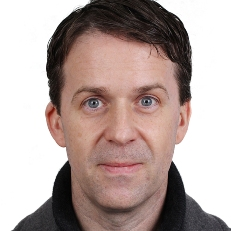Detection Methods and Numerical Analysis of Faults in Structural and Geotechnical Engineering
A special issue of Sensors (ISSN 1424-8220). This special issue belongs to the section "Fault Diagnosis & Sensors".
Deadline for manuscript submissions: 31 July 2024 | Viewed by 2549
Special Issue Editors
Interests: discontinuity; machine learning; multiscale modelling; isogeometric analysis
Special Issues, Collections and Topics in MDPI journals
Interests: multifield analysis; continuous–discontinuous methods; neural network; geotechnical structures
Special Issues, Collections and Topics in MDPI journals
Interests: continuous discontinuous numerical methods and software; explosion and shock waves; rock fracture and fragmentation; rock engineering and digital twin
Special Issues, Collections and Topics in MDPI journals
Special Issue Information
Dear Colleagues,
From crystal dislocation to rock joints, faults can be found on different scales in different structures. From an engineering point of view, faults grow and evolve, exerting great influences on the stability and durability of structures. From the mathematical point of view, faults commonly refer to discontinuities, bringing great deviations from analytical solutions based on partial differential equations. With the development of smart sensors, non-destructive testing, machine learning algorithms, high-performance computation technology and powerful computing methods, novel detection methods have emerged that can find and trace the geometric and historic information of faults to evaluate their influence on structures and predict their evolution. This Special Issue of Sensors, entitled “Detection Methods and Numerical Analysis of Faults in Structural and Geotechnical Engineering”, will focus on, but is not limited to:
- Methods, sensors, equipment detecting faults in structures;
- Numerical methods evaluating the working performance of structures with faults;
- Numerical analysis on multiscale properties of faults;
- Machine learning approaches predicting evolutions of faults;
- Complex numerical case studies of structures with faults;
- Attempts of digital twin on detection/tracing/analysis of structures with faults.
We are particularly eager to publish manuscripts with validations of results via indoor experiments or onsite testing/monitoring.
Prof. Dr. Timon Rabczuk
Prof. Dr. Yiming Zhang
Dr. Chun Feng
Dr. Zizheng Sun
Guest Editors
Manuscript Submission Information
Manuscripts should be submitted online at www.mdpi.com by registering and logging in to this website. Once you are registered, click here to go to the submission form. Manuscripts can be submitted until the deadline. All submissions that pass pre-check are peer-reviewed. Accepted papers will be published continuously in the journal (as soon as accepted) and will be listed together on the special issue website. Research articles, review articles as well as short communications are invited. For planned papers, a title and short abstract (about 100 words) can be sent to the Editorial Office for announcement on this website.
Submitted manuscripts should not have been published previously, nor be under consideration for publication elsewhere (except conference proceedings papers). All manuscripts are thoroughly refereed through a single-blind peer-review process. A guide for authors and other relevant information for submission of manuscripts is available on the Instructions for Authors page. Sensors is an international peer-reviewed open access semimonthly journal published by MDPI.
Please visit the Instructions for Authors page before submitting a manuscript. The Article Processing Charge (APC) for publication in this open access journal is 2600 CHF (Swiss Francs). Submitted papers should be well formatted and use good English. Authors may use MDPI's English editing service prior to publication or during author revisions.
Keywords
- discontinuities
- monitoring
- non-destruction testing
- numerical methods
- stability
- durability
- multiscale









